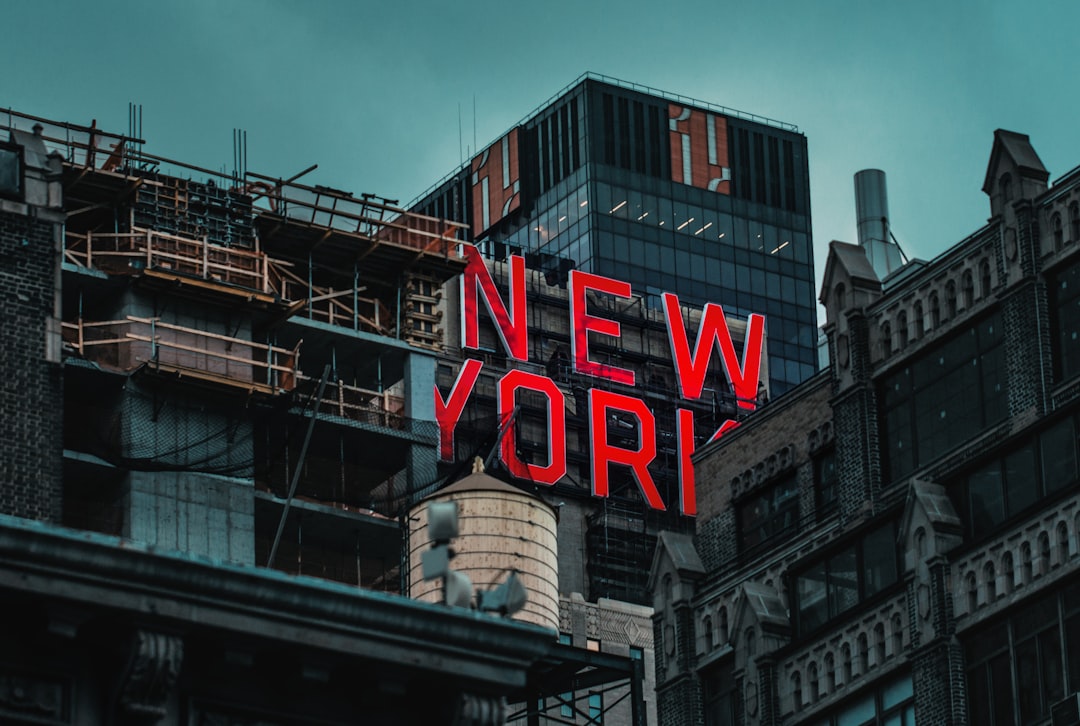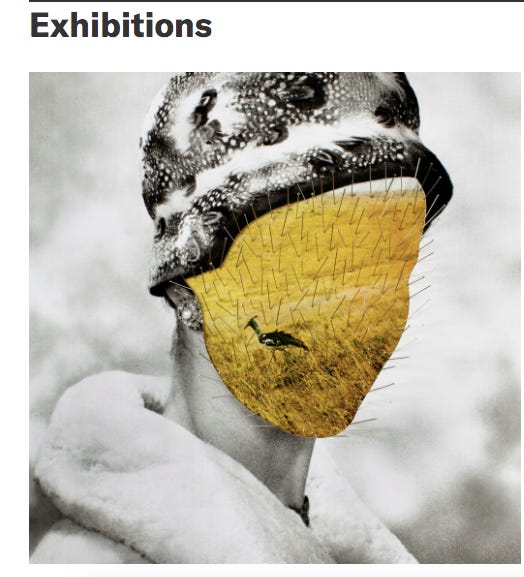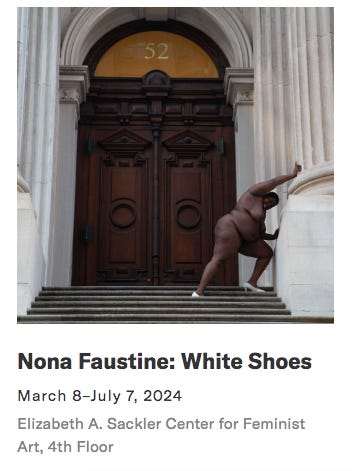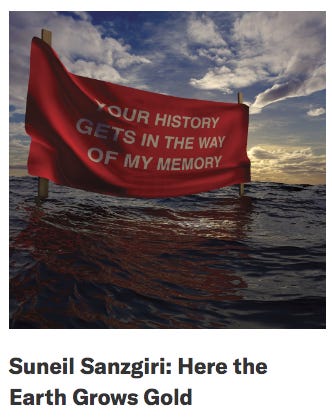
I am in New York again, and I am sending you this postcard from a city I love and have loved; from a broken city. Broken; yet struggling to reimagine itself, as it has so many times before.
Are we better? Are we lost? Are we changed, changed utterly?
Here are some images, some moments, for you.
###
We are post-Tower of Babel now.
The culture of New York is now completely fragmented, and this happened through language.
It used to be that while there were a million different languages and accents here, everyone was trying to communicate as best he or she could — all the time. New Yorkers were famous for this! Any given day was thrilling, because random strangers, from whatever part of the world, would say something silly or funny or wise to you in passing, and everyone would manage to get the gist of each other, whatever anyone’s level of English. We were all present in the joy of being Americans — New Yorkers!— together.
That commonality is simply gone. Culturally, this city could now be anywhere in the world — any globalist, polyglot city. The culture that was New York has been smashed right through.
This is the globalist play, right? The globalists understand better even than we had done, how precious a specific culture is, and they understand that if you throw enough people at it from everywhere in the word, with no acculturating processes or numerical limits, there is eventually no culture left there at all.
English-speakers are no better than anyone else, of course, but there is value in a shared culture that can only come about via a shared language; indeed, a lingua franca; national language.
The fact that somehow, all at once, English has collapsed as even the remotest goal of New York City common speech, and that speaking English seems not to be important at all to many of the newest immigrants, means that there is a loneliness and sadness and boredom and homesickness, involved with getting around New York City and its boroughs — journeys that used to be thrilling because you met people from everywhere, through their English.
Somehow it has suddenly become acceptable completely to ignore people in ordinary human interactions, and not even to try to communicate with them in even very basic English.
I got into an Uber to go from Manhattan to Brooklyn, and the Nigerian driver kept speaking into his headphone in Yoruba (I think); he barely acknowledged me in English once I entered his car. Gone are the days of deep philosophical discussions with New York City cab drivers, of whatever origins. This driver kept on speaking Yoruba (I think) to the invisible presence in his headphones, as I left his car.
I entered the supermarket near our Brooklyn apartment, and the young lady checking out my groceries kept speaking in Spanish to her colleagues throughout the entire checkout process, not interrupting her conversation with them once. She did not say a word to me in English, though I was friendly throughout. That linguistic iciness never used to happen.
Even recent immigrants with very little English in New York used gladly to say “Good morning!” or “Have a nice day!” — whatever chit-chat their language levels allowed — as recently as just a few months ago. We were all participating in a common linguistic community, at whatever level anyone happened to be.
Now that effort of participation seems to have simply been dropped in many quarters. I don’t know how or why cultures suddenly shift in these ways or why the prestige of English suddenly collapsed; but the fact that many people in the City now have given up trying to communicate in English, and tend to ignore those who do not speak their languages, creates an anomie, a fractured civitas; atomization. And it weakens us as a city. We cannot speak to one another in a crisis, let alone create culture, dance, or music together, or even spark romance or build families together; we can no longer have those moments of humor or goofiness or the deep many-cultured into one-cultured exchanges, that I miss so much.
####
There is a marked degradation in what can only be called aesthetics, and a great deal of erasure of what had been the presence of the treasures of Western culture.
There is almost no fashion.
Almost no young women are wearing dresses, or pretty blouses or skirts. “Pretty” seems pretty unfashionable right now. And “feminine” is totally out of the window. Most trendy young women are wearing wide-legged slacks and chunky army boots; there are plenty of piercings. There is a bit of a dominatrix thing going on as well, with some young women wearing tiny shorts and black thigh-high leather boots. Young women now sit, when they wear slacks, with their legs wide apart, and fashion images on billboards are full of models in this pose. I am not a prude but perhaps I am old-fashioned, as my grandmother taught me that doing this was unladylike, and I do find the repetition of this image — of young women everywhere shown with legs splayed — degrading, in relation to the idea of the feminine.
I took the subway on Wednesday up to Harlem. I was rather proud of myself, as I had hesitated to take subways again since the fallout from “Defund the Police,” one of the dumbest movements in US history. I was edgy though.
The subways no longer have Western cultural markers that I recognize. There were city-funded “art” panels that showed a red Chinese dragon. There was an “art” panel in which a child playing an instrument seemed to have three horns on her head. There were no ads any longer — at least not in the cars in which I rode or in the stations I saw — for museum exhibits or concerts involving our Western classical past. No Impressionists, no Mozart. The Brooklyn Museum had a range of exhibits. Many seemed to me disturbing, or random. Others were critiques of received history.
“In the Now: Gender and Nation in Europe,” above.
I don’t mean to be a troglodyte, but only one exhibit - about the Renaissance sculptor Luca Della Robbia — even referenced our Western artistic or art-historical tradition. (Exhibits on design and on period rooms, both more utilitarian than is art itself, were allowed to remain). If you are a child going to the Brooklyn Museum on a field trip, you will literally have no idea what the Western artistic heritage has been, but you will learn that it is bad.
Later that day, a subway station through which I had passed, Hoyt-Schermerhorn, was the scene of a brutal gunfight, in which the initial shooter was badly wounded. Social media buzzed that afternoon with video of New Yorkers cowering, some praying, on the floor of the subway car — as the shooter paced about.
#####
When I got off the subway, upon taking in 125th Street, I was disoriented. When I’d last been here — in 2019 - it was an urban crossroads that was sleek and polished, and electric with pride.
At that time, money had been pouring in to Harlem. Many wealthy people had moved uptown and, while I acknowledge that gentrification can be a mixed blessing, the neighborhood was prosperous; in many areas, flush. New businesses were opening; “Restaurant Row”, which features such legendary soul food restaurants as Sylvia’s and The Red Rooster, sparkled. The Schomberg Center for Research in Black Culture showcased documentaries and exhibits. The resplendent history and culture of Harlem at that time were not being erased, but celebrated. People flocked from all over the city to Harlem because of the vibrancy of the culture, and of the area’s remarkable history.
Now, I could scarcely believe my eyes. A dozen haunted-looking homeless people, with the skeletal builds and splayed teeth of meth addicts, wandered around the broad sidewalk, asking everyone who emerged from the subway for money. Their mouths were so distorted, and their eyes so glazed, that they could barely speak. The construction boom pre-”pandemic” seemed to have come to a standstill. Windows were boarded up. Trash and graffiti were everywhere. More than anything, the vibe, the pride, the exuberance — were gone, or at least very subdued.
An old friend of Brian’s and of mine met me, and we went to Sylvia’s for a drink. I mentioned that the city seemed broken.
“Broken in what way?” he asked, genuinely interested.
Broken in what way? The unanswerable question.
In nine million ways.
I think if one lives here day to day, the shocking decline of the city is not so obvious. But to me, the change in the city was like seeing a beloved friend, who had formerly been beautiful and enchanting and witty, in a hospital bed, on an IV drip, half-unconscious.
#####
I met two other old friends from the “Before Times”, on another night, for dinner, at a Mexican restaurant on Sixth Avenue, near Canal street.
All of Canal Street, that formerly irrepressible commercial thoroughfare, had been scrubbed of the little mom-and-pop shops, the Chinese restaurants and inexpensive jewelers, the stores selling knockoff watches and handbags.
I had observed in 2021 how Chinatown, all the way up to Canal Street, had been systematically driven into bankruptcy or collapse, small business closing after small business, during — and by — the “lockdowns.” My phone is full of photographs of shuttered storefronts that were driven to close down by having been forced to suspend trading for eight months.
I knew then, and wrote about it at that time, that this was sure to turn out to be a real estate play.
The big developers had never previously managed to get their hands on Chinatown — with its prime real estate that was in the hands of small landlords — because the local culture and community and the small businesses that sustained the small landlords, had been too strong.
But now, the area, block after block, was like a chessboard that had been intentionally swept clear of pieces.
What I saw now was what I knew in 2021 I would eventually see.
Gleaming new storefronts, with $400 jackets and $700 shoes, all curated and lit up like sculptures. Little art galleries, selling $12,000-$25,000 works of modern art to wealthy, young, hip collectors. Chain bubble tea shops. Chain hotels.
The big developers had gotten at last what they had for so long desired.
My two friends and I huddled in the bright, yellow-painted interior of the restaurant. It was a bit dingy and a bit outdated, with cheerful travel posters and strings of lights. It was, we agreed, just the same as it had been in the “Before Times.”
We were glad to have our inexpensive fish tacos and fajitas together. We were all three of us, refugees in our own city now.
These two had been isolated and exiled by their friends, just as I had been by mine, during the “pandemic.” They, like I myself, were unvaccinated. They, like I myself, had tried to warn our friends and loved ones about the injections, and had for their pains been vilified and shamed and scorned. I admire them so much because they stayed consistent and patient, and approached everyone —- and even endured that experience of being rejected — with open hearts and with love.
Now we three leaned toward one another, the strings of lights creating a festive glow around us. In low, urgent voices, we caught up with one another; meaning, we caught up with the illnesses and deaths in our extended circle.
One friend has a neurological disorder. One friend’s sister died in her sleep. One friend’s wife died of a heart attack while jogging. One friend has pancreatic cancer. One younger woman had a “mini-stroke.” (Certain details are altered to protect identities).
I described to them a dinner party of highly vaccinated people, which I had attended recently, in which three of the twelve people present had hand tremors.
We all spoke eventually about how no one had ever apologized for how we had been treated, or said that we had been right. But we all agreed that we did not need the apologies and we did not wish to be right.
We just wanted our friends to be well.
Death and disability were all around us; descending like the darkness around a campfire.
####
When I got home, I walked past a new cannabis store that has recently opened up. There are cartoony, bright, delicious-looking ads on the outside of the storefront, that offer peanut butter marshmallow cannabis, or tropical fruit cannabis, or Coco Crispy cannabis. These are exactly like the bright ads for sugary cereals that are aimed at kids.
Just as I was thinking, “Those cannabis ads are aimed at kids,” three kids — who looked as if they were about thirteen; two boys and a girl — glanced both ways, drew themselves up as if they were about to do something really cool and fun and grown-up, and went on inside.
####
I love this city still. I love it.
I do not understand what is happening.
And yet I also do.
In prayer today, I asked God what was happening. I figured I might as well go right to the top with my questions.
“Why do evil and suffering seem to be everywhere? How long will this last?”
I took away from that time in prayer, an understanding or a sense (impossible to explain how prayer works; who knows how these insights emerge in our minds?) that we really are now walking through “the time of Satan.” That was literally the phrase that surfaced (or descended) into my mind.
And I understood that “there is no way out but through”, which is a phrase that Brian likes to use when trying to describe to me what it is like to be in combat.
It’s a time of shadow. There is literally a shadow across the path of humanity.
Psalm 23:4 speaks of “the valley of the Shadow of Death”; and here we are, it seems, at last.
It’s a time of metaphysical reversals, and generalized, not just personal, sickness.
It is a time when things that are usually in the crevices of human experience, and things that are at least metaphorically penned underground, have been permitted out, to walk among us; to organize institutions as they will; to manage events as they wish.
Maybe demons really do exist.
Maybe demons always were — the people who would sell off their fellow human beings’ bodies, or traffic children; or poison their fellow human beings intentionally.
Maybe demons always were — the people who would erase and mock what is beautiful and noble in the works of men and women; or invite children to enter alluring interiors, to drug their growing consciousnesses.
Maybe the shadow of death, along with the light, and maybe these demons, along with the humans, have always been right here in this dimension with us; right alongside us.
Maybe right now, walking through the Valley of the Shadow of Death means that we are simply being allowed —
To see them for what they really are.
Pre-Order: The Pfizer Papers: Pfizer’s Crimes Against Humanity
Order: Facing the Beast: Courage, Faith and Resistance in a New Dark Age






I believe we have been reckless with what the Lord has given us and this is now what we have. The wreckage of our recklessness. We propel the murder of 1.6 million babies a year. We shun covenantal relationships as too outdated. What did we expect? That God would just continue to turn a blind eye at our wickedness?
I feel as if He has been doing exactly as he states in Luke 3:17:
His winnowing fork is in his hand, to clear his threshing floor and to gather the wheat into his barn, but the chaff he will burn with unquenchable fire.” And Those who admit their need, and trust in God, are those who will be granted sight—just as the blind man was given both sight and knowledge by Jesus in response to his sincere faith. Those who are arrogant and presume they already know, will be hardened by the presence of Jesus, instead.—John 9:39
I have been saddened by all the devastating effects of this mass genocide. My medical freedom friends tried so hard by putting up V is for Vaccine events in 2019/2020 (one at Times Square in October 2019 and one at Barclay Center in January 2020 during the Oprah event) under the guidance and aid of the brilliant Josh Coleman.). We spent countless hours in Albany and Hartford fighting legislation removing our freedom of choice for injections. But I now see that there are just so many whose eyes would remain closed and blind to truth. So my goal now is the Great Commission.
Go therefore and make disciples of all the nations, baptizing them in the name of the Father and of the Son and of the Holy Spirit.” He said to them, “Go into all the world and preach the Gospel to every creature.”
The time has certainly come to prepare ourselves and others by turning them to their Creator. Like Ezekiel in the desert or Jonah to the Ninevites.
You are in my prayers, Naomi.
I am touched by your account of NYC. I never lived there, but did live in Chicago for many years and I know that sort of jovial interaction that crosses ethnicity. It is alive and palpable. What a shame it has been shuttered. I also understand about the demonic presence. I see it clearly and you are correct. There is no way out but through. I have learned how to see it and how to protect myself from it. I pray that this understanding can increase. The earth is not meant to be a playground for demons. But we need to face it squarely in order to be free of it.